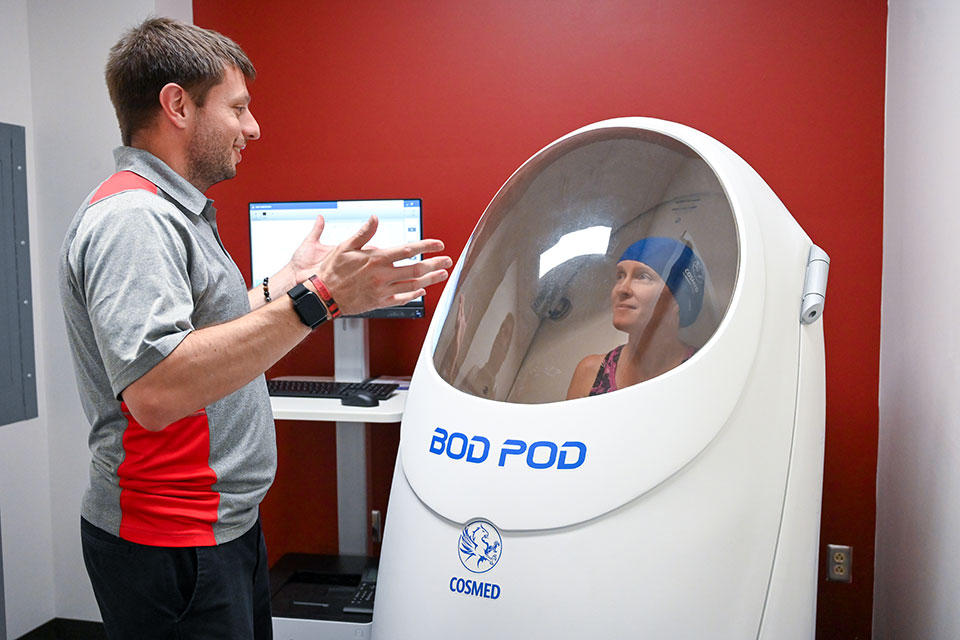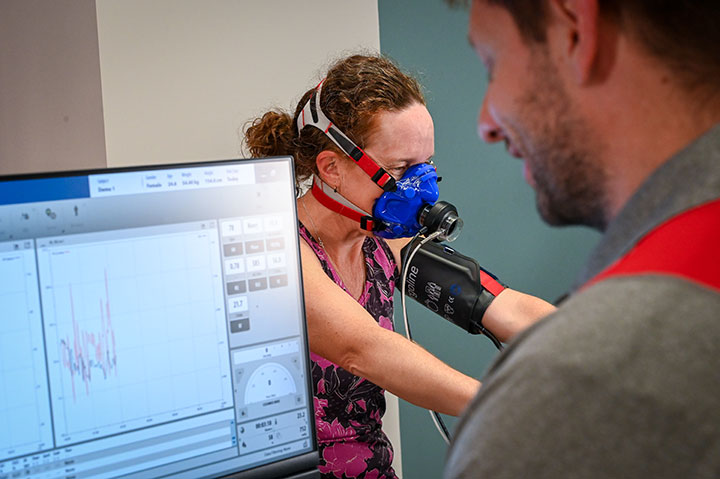St. John Fisher University Opens New Athletic Performance Lab
This past summer, St. John Fisher University created the new Athletic Performance Lab to support students majoring in athletic performance. Launched only two years ago, the major has gained traction quickly and is an addition to the School of Arts and Science’s life sciences division.
When the athletic performance program began, students used the weight room and fitness center as their lab space, but it presented its challenges. It was difficult to coordinate class time without distraction between students learning in the space and student-athletes training in the space, explained Kristy Hart, a visiting instructor in the program. As the athletic performance major is an applied study, students needed a dedicated space to learn theory and then have the opportunity to apply it, added Hart.
“Having a space dedicated to the program allows for better quality of learning for the students,” she said. “I am appreciative that the University was willing to go all in on the program.”
The importance of having the Athletic Performance Lab for students in the major is critical, added Dr. Andrew Wells, an assistant professor.
“This is the environment and the equipment students will be working in and with as professionals. They have to understand the environment and how to use this equipment effectively to build resilient high performing athletes,” he continued. “Trying to have an athletic performance program to prepare students for a career in health and wellness or as an agent to improve athletic performance without a lab would be very challenging.”
Wells explained that students learn proper lifting techniques, how to coach athletes to use proper lifting techniques, and use the lab’s equipment to assess and track an athlete's performance. One such example of the lab’s capabilities is the use of a metabolic cart, which measures the amount of oxygen a person can use during exercise at maximal effort. Known as a VO2max test, it allows for the development of an evidence-based training plan to improve an athlete’s performance in longer distance events, Wells explained.
Another capability of the lab involves a piece of equipment called the BOD POD™, an air displacement plethysmography device, that will help students learn about body composition. Wells added that the device allows students to look at body density, a means of estimating fat and fat free mass which includes muscle. For athletes, the BOD POD™ can be an effective way to assess their change in estimated muscle and body fat over time to evaluate if a training program is working as intended to improve performance specific to their sport or event, and position, Wells explained.
However, the Athletic Performance Lab is not limited to just these two capabilities. The lab can also test several facets of athletic physical fitness such as resting energy expenditure; muscular strength, endurance, and power; flexibility; and balance. This allows for a dynamic range of assessment to track training and nutrition interventions to reduce risk of injury as well as improve performance based on the individual athlete's needs.
The includes equipment that people would see at a traditional gym such as kettlebells, power racks, medicine balls, and more. The space also contains a fair amount of testing and training equipment, including sit and reach, hand grip dynamometers, joint range of motion, and more.
Wells said that the opening of the Athletic Performance Lab is particularly exciting for the incoming first-year class, as they will have it for the duration of the collegiate career at Fisher.
“The program aims to implement academic learning experiences for students which includes undergraduate research and to create collaborative opportunities for faculty to do research across a variety of scientific fields,” said Wells. He hopes to develop a community program to provide testing services to individuals interested in improving or maintaining their fitness which would extend to working with Fisher teams to help student-athletes. The goal is to “use this lab to its maximum capacity and maximize the benefit,” he said.
There are many professions students can choose once they have graduated from the program, including strength and conditioning coach, physical therapist, or sports physician, among others. Overall, the program wants to match the experience in the Athletic Performance Lab to what students will see when they leave, from knowing how a facility runs to understanding how to effectively use athletic performance testing equipment.
This article was written by James Bruneau, a senior media and communication major and marketing minor. Bruneau currently serves as a public relations writing intern with the Office of Marketing and Communications at Fisher for the fall 2024 semester.

